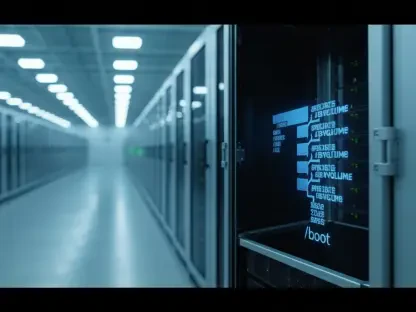In recent years, the demand for reliability and continuous operation in public safety systems has become more critical than ever. Municipalities today navigate the complexities of ensuring their infrastructure can handle emergencies without succumbing to failures or delays that could endanger citizens. Integrating DevOps methodologies within these systems offers a strategic advantage, essentially making resilience and robustness foundational to their function. By exploring how DevOps principles enhance the resilience of public safety systems, municipalities can shift towards more proactive strategies that include advanced monitoring, effective rollback systems, and insightful logging practices. These improvements play an instrumental role in maintaining uninterrupted service delivery, critical for systems tasked with safeguarding public welfare.
Rollback Mechanisms in High-Stakes Systems
The significance of flexible and readily available rollback mechanisms cannot be overstated in environments where downtime is simply unacceptable. Ensuring that new deployments can be reversed swiftly without excessive downtime is crucial for maintaining service continuity. Deploying features without established rollback strategies is likened to walking on a tightrope without a safety net. Tools like LaunchDarkly offer valuable solutions by enabling feature flagging, which adds an extra layer of control over deployments. This approach allows developers to selectively enable or disable features, mitigating risks by reverting problematic changes promptly. Deployment systems equipped with pre-planned rollback sequences, including redirecting traffic to stable instances, ensure that any disruptions are minimal. This capacity to revert seamlessly becomes especially vital during unexpected failures, effectively reducing the downtime that might otherwise have severe consequences in public safety environments.
Moreover, the integration of rollback mechanisms is not merely about maintaining service stability but is also about enhancing organizational confidence. When developers know that their changes can be reversed without catastrophic fallout, it fosters an innovative environment where risk-taking is measured and managed. This assurance enables teams to push boundaries while knowing that there are safety nets in place, which ultimately leads to more robust and resilient systems. Therefore, incorporating these mechanisms into the foundational design of public safety systems supports their uninterrupted function and adaptability, crucial in an industry where reliability cannot be compromised.
Enhancing Visibility with Actionable Logging
Actionable logging practices offer deeper insight into system operations, transforming logs from mere records into valuable tools for preemptively addressing faults. Rather than simply capturing events for audit purposes, logs should provide real-time actionable insights that proactively alert teams to emerging issues. Structured logging with machine-readable fields ensures consistency, facilitating easier parsing and analysis. Incorporating advanced monitoring systems like Azure Monitor plays a pivotal role in detecting anomalies. By setting immediate alerts triggered by specific exception rate thresholds, teams gain the ability to mitigate potential issues before they affect end-users, thus minimizing the impact of any disruptions that might arise. This preemptive approach ensures service continuity, which is paramount in public safety contexts where even brief downtimes can have dire consequences.
Additionally, the adoption of actionable logging frameworks empowers teams to develop a more responsive and agile approach to incident management. Understanding the nuances of system behavior through detailed logging data enables quick diagnosis and resolution of problems, thereby reducing response times. This level of insight is invaluable, allowing for swift corrective measures that enhance system reliability. Ultimately, actionable logging transforms how organizations perceive and respond to potential faults in their system, promoting a culture of constant vigilance and proactive resolution, essential for maintaining the high reliability that public safety systems demand.
Implementing Pipeline Kill Switches
Within the sphere of DevOps, the implementation of pipeline kill switches provides a critical layer of control over service continuity, enabling the swift shutdown of failing services to prevent widespread disruptions. These mechanisms are designed to offer immediate intervention capabilities, allowing developers to cease problematic processes without collateral damage to the entire system. Integrating kill switches within deployment pipelines ensures that any discrepancies are quickly contained and isolated, thus preserving the integrity of the overall system while addressing the specific fault. This strategic inclusion of gateway-level kill switches, verified by rigorous post-deployment smoke tests, prevents service collapses by providing a controlled method for disaster recovery. By simulating failure scenarios regularly, teams become adept at managing real-world disruptions, ensuring that when actual problems arise, responses are quick, informed, and effective.
Moreover, pipeline kill switches cultivate a culture wherein teams are continuously prepared for unexpected challenges. By anticipating potential fail-points and rehearsing responses, organizations can navigate the unpredictable landscape of public service with confidence and agility. This approach minimizes panic and fosters a methodical problem-solving atmosphere, which is crucial in high-stakes environments. The emphasis on preparedness rather than reaction redefines how public safety systems approach potential disruptions, ensuring that they can maintain their essential functions, even under duress.
Cultivating a Resilient Mindset Through Simulations
Conducting routine failure simulations and chaos drills instills a mindset of resilience and preparedness, equipping teams to handle real incidents effectively. Normalizing these practices ensures that failure is not seen as an anomaly but as an opportunity for learning and system strengthening. Chaos drills simulate various disruptive scenarios, testing system vulnerabilities and spotlighting areas for improvement. This proactive approach emphasizes the significance of graceful degradation, emphasizing the importance of maintaining core functions even amid failures. These exercises reinforce the necessity for prompt exception detection and agile incident response, crucial in ensuring that services remain operational with minimal disruption. By embedding such practices within the organizational culture, teams become adept at managing complexities, reducing the impact of unforeseen events on their operations.
In addition, regular simulations foster a culture of continuous improvement, encouraging teams to explore innovative solutions to identified weaknesses. This mindset ensures that systems evolve alongside emerging threats and challenges, continuously enhancing their robustness. Continuous exposure to simulated failures builds confidence among team members, allowing them to tackle real disruptions with assurance and effectiveness. Ultimately, this dedication to anticipating and mitigating the impact of failures underscores the importance of engineering resilience into public safety systems, ensuring that they fulfill their critical roles without interruption.
Conclusion: A Future Built on Proactive Strategies
In settings where downtime is untenable, having flexible and accessible rollback mechanisms is essential. The ability to quickly reverse new deployments with minimal downtime is fundamental for uninterrupted service. Launching features without rollback plans is akin to traversing a tightrope without a safety net. Tools like LaunchDarkly offer valuable solutions by supporting feature flagging, adding control over deployments. This method allows developers to enable or disable features selectively, reducing risks by quickly reverting problematic changes. Deployment systems with pre-planned rollback sequences, such as redirecting traffic to stable instances, ensure minimal disruptions. This ability becomes crucial during unforeseen failures, effectively cutting downtime that could otherwise have serious repercussions, especially in public safety sectors.
Furthermore, incorporating rollback mechanisms isn’t just about stability but also boosting organizational confidence. Knowing changes can be undone without major issues fosters an innovative atmosphere. This assurance encourages teams to take calculated risks, thereby leading to more robust systems. Integrating these mechanisms in public safety system designs ensures their seamless operation, a necessity where reliability is non-negotiable.









